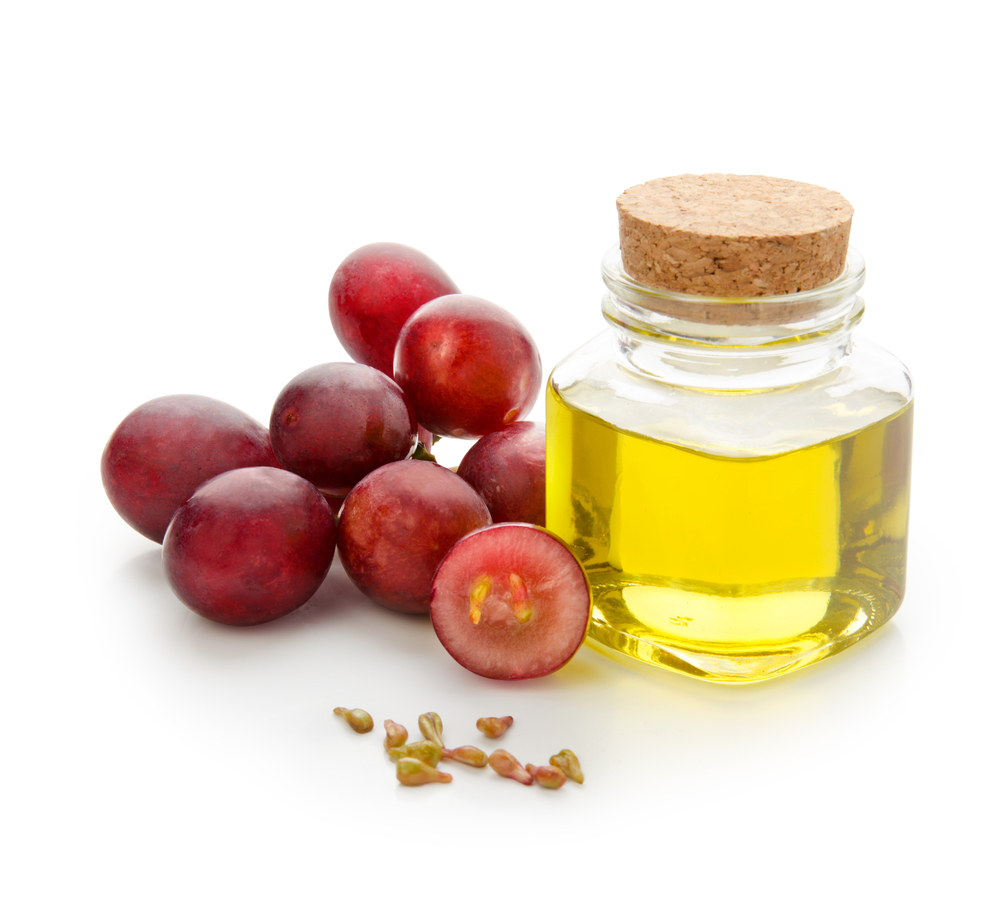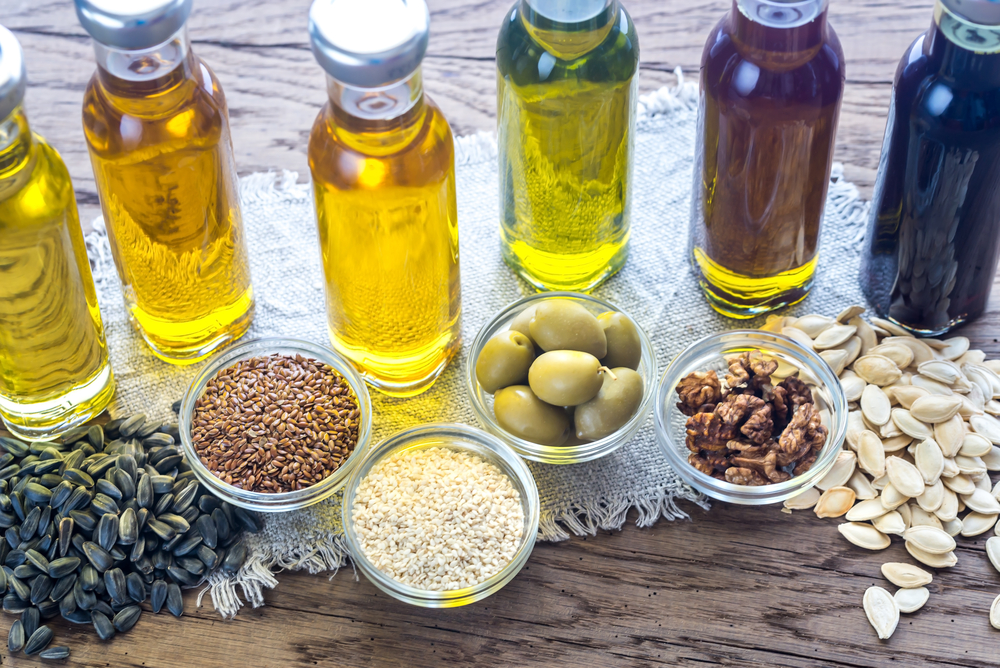
$49 – $229
Royal CBD
Royal CBD Oil 30 mL
| Total CBD: | 500 – 2500 mg |
| Potency: | 16.6 – 83.3 mg/mL |
| Cost per mg CBD: | $0.12 – $0.18 |
| Extract Type: | Full-spectrum |
| THC Content: | <0.3% |

CBD oils can be made with MCT, hemp seed, avocado, olive oil, and more. What’s the difference? Does the carrier oil matter? We explore this topic in-depth.
If you look at the label of your CBD oil, you’ll see that it contains more than just hemp extract.
As the name suggests, CBD oils also include an oil — which is usually some form of vegetable oil or vegetable glycerine.
These oils serve an important purpose — to help deliver the active component — in our case, CBD — to the body.
There are many different carrier oils used in CBD products — coconut, MCT, palm, olive, avocado, hemp seed, sesame, and grape seed oil — each with their own set of positives and negatives.
In this article, we’ll cover everything you need to know about carrier oil selection. We cover MCT, olive, hemp seed, grape seed, and glycerine — including the pros and cons of each.
So let’s get started.

As the name implies, a “carrier oil” carries the CBD and other phytochemicals. It’s a simple solution. The carrier oil acts as a solvent to dissolve the compounds of the hemp plant to make them easier to use.
This concept isn’t unique to CBD products. The same concept applies when making Kool-aid by dissolving the flavored powder into water, or when making soapy water to wash the dishes.
The only difference here is that a fat is used instead of water. This is because cannabinoids are soluble in oils and fats instead of water.
There are three main reasons carrier oils are used. Let’s cover each one in more detail.
One of the main reasons CBD oil manufacturers dilute hemp extracts like CBD in a carrier oil is to improve absorption in the gut. This works because CBD is a fat-soluble substance.
This is important because the body has two separate pathways for absorbing compounds into the body — a water-soluble pathway and a fat-soluble pathway. This all happens at the working unit of the intestinal tract known as the microvilli (pictured below).

Water-soluble compounds like most amino acids, sugars, and minerals can travel directly through the gut lining into the water-based blood. From here, they’re transported around the body. In the diagram above, water-soluble substances enter the red portion under the surface (the blood).

Fat-soluble substances on the other hand — like CBD — can’t go directly into the bloodstream. They first need to get packaged up into tiny droplets called micelles. These micelles then enter the fatty lymph tissue — a network of fat-based compounds and immune cells. They then travel up the body through the lymph, eventually entering the bloodstream directly above the heart. In the diagram above, the lymph is the green tubes (called lacteals). These lacteals carry the CBD (and other cannabinoids) to the lymphatic system.
Absorbing fats in this way requires a series of enzymes in the digestive tract to prepare the fat molecules for absorption by breaking them down and turning them into micelles. When we eat fats, taste receptors in our mouth send signals to the digestive tract to get these enzymes ready.
When we take CBD alongside other fats, it helps prime the body for this effect — signaling the rest of the body to prepare for fat absorption — which effectively increases the amount of CBD the body can absorb.
The difference between 5 mg and 50 mg of pure CBD crystals is minuscule — 50 mg of this highly-refined source of CBD is about the size of a match head.
Getting precise doses like 7.5 mg requires a precision scale and can’t be done accurately with the naked eye. We need special equipment for this, which simply isn’t realistic for most CBD users.
The solution is to first dilute the CBD crystals into a carrier oil at a predictable amount — such as 100 mg, 300 mg, 600 mg, or 1000 mg CBD per bottle like you’ll find listed on most CBD oils.
From here, the larger volume of the oil with CBD dissolved is much easier to measure. The same 50 mg dose can be measured by counting the drops of oil or measuring the fluid in a measuring spoon. It makes dosing CBD significantly more accurate and consistent.

| Total CBD: | 500 – 2500 mg |
| Potency: | 16.6 – 83.3 mg/mL |
| Cost per mg CBD: | $0.12 – $0.18 |
| Extract Type: | Full-spectrum |
| THC Content: | <0.3% |
Many carrier oils bring health benefits of their own.
For example, coconut oil is widely recognized for its antibacterial and antifungal properties and may help increase levels of HDL (“good”) cholesterol [5].
Olive oil is reported to reduce the risk of heart disease in other ways [6].
Other carrier oils offer antioxidant benefits, provide a small amount of energy to the body, and offer beneficial omega 3 fatty and 6 fatty acids as well.
Of course, most of these benefits would require relatively larger amounts of the carrier oil. Effective doses of these fats usually begin around the 10 mL mark and above.
The dose of CBD oil can fall anywhere between 1 – 10 mL depending on the potency of the oil.
Different CBD brands use different carrier oils, and some even mix multiple carrier oils into the same product for a unique blend.
The most common carrier oil used to make hemp oils by far is MCT oil (medium-chain triglyceride oil) — but there are many possible CBD carrier oil choices.
Let’s cover the 5 most common carrier oils companies are using, and discuss the positives and negatives of each.
Fat molecules produced in nature normally come in groups of threes called triglycerides.
A triglyceride basically involves combining three fatty acids of varying lengths (short, medium, and long-chained fats) together with a sugary glyceride backbone holding them all together. This is how fats are found in both plants and animals.

The length of the fatty acid chains are determined by the number of carbon atoms they’re made of:
MCT oil is derived from coconut or palm oil — which is naturally high in triglycerides made of medium-chain fatty acids like caproic acid (C6), caprylic acid (C8), capric acid (C10) and lauric acid (C12).
Medium-chain fatty acids are considered the best for use with CBD oils because their shorter structure allows them to be absorbed immediately through the digestive tract rather than having to be first broken down into smaller pieces — which would mean a much slower absorption rate.
Short-chain fatty acids aren’t desired because they serve as a primary source of food for the bacteria living in the gut — which means they’re quickly consumed by our bacteria before the body can absorb them.
MCT oils sit in the sweet spot for use with CBD oils and are exceptionally cheap due to the abundance of coconut, soy, and palm oils available on the market.
| Pros | Cons |
|---|---|
|
|
Not to be confused with the hemp oil that is extracted from hemp flowers and used to make full-spectrum hemp extract and CBD isolate. Hemp seed oil comes from the seeds of the hemp plant. There are virtually no cannabinoids or terpenes in these oils.
Although hemp seeds do not contain cannabinoids, research suggests it’s possible for hemp seed oil to contain trace amounts of cannabinoids due to the seeds coming in contact with resin oil secreted by hemp flowers [1]. Since we’re adding the cannabinoids to the mix anyway to make hemp oil, this isn’t much of a concern.
Many experts argue that making CBD oils from hemp seed oil can further enhance the entourage effect due to the presence of other hemp-produced phytochemicals that may not be found in the extract made from the leaves and flowers.

Hemp seed oil is popular as a health supplement on its own. It’s rich in omega-3 fatty acids — which are widely known for their health benefits on the brain, joints, skin, and immune tissues. The oil even has the ideal 4:1 ratio of omega-6 to omega-3 fatty acids.
You’ll usually find this oil in premium CBD oils that market themselves as being full-spectrum, aiming to leverage the entourage effect wherever possible.
| Pros | Cons |
|---|---|
|
|
As the name suggests, grape seed oil is extracted from the seeds found in grapes. This oil has a light fruity flavor and high unsaturated fat content. It’s known for its antioxidant and anti-inflammatory properties, which give it some added benefits when used as a carrier oil [3].

Grape seed oil contains compounds like tocopherol, linolenic acid, resveratrol, quercetin, procyanidins, carotenoids, and phytosterols along with various short, medium, and long-chain triglycerides [8]. The most abundant fatty acids in the mix is oleic acid, made up of about 18 carbons — which makes it a long-chain fatty acid.
Grapeseed oil is less common than hemp seed oil or MCT oil but is a great carrier oil nonetheless. It has a high solubility, subtle fruity flavor, and relatively fast absorption rate.
| Pros | Cons |
|---|---|
|
|
Olive oil is commonly used for cooking but serves as a great carrier oil. Like many of the other oils on this list, olive oil is rich in phytonutrients. It’s notably high in iron, vitamin K, vitamin E, and a host of antioxidant compounds like tyrosol and oleuropein.
Olive oil predominantly consists of long-chain triglycerides (LCTs). Which takes more time to break down but may increase the absorption efficiency of hemp extracts in the digestive tract [4].

There’s a downside to this high nutrient density as well. The large number of compounds in the oil means there’s less room to dissolve CBD and other cannabinoids — this is why you’re unlikely to find high-potency oils using olive oil. Instead, this carrier oil is reserved for lower-potency products in the 20 mg/mL range or below.
| Pros | Cons |
|---|---|
|
|
Vegetable glycerine (VG) isn’t technically a carrier oil, but it shares a lot of similarities. It’s also a popular addition to CBD tinctures to dilute the CBD content to make it easier to use, and it’s derived from the same triglycerides other fatty acids come from.
Remember when we discussed MCT oil? We covered what the structure of fat molecules known as triglycerides — including the sugary backbone that holds it all together.
Vegetable glycerine is made by removing the fatty acid molecules from the triglycerides — leaving behind pure glycerol (glycerine).
This compound is technically a sugar and has a distinct sweet taste. It also has relatively high solvency for fat-soluble compounds like CBD — allowing manufacturers to make mid-level potency oils.
Vegetable glycerine is a popular ingredient in CBD oils because it has a more agreeable taste than many other carrier oil options and can be used in a vaporizer.
In fact, vegetable glycerine is one of the main ingredients in vape oils for its ability to create thick white plumes of cool vapor when gently heated.
| Pros | Cons |
|---|---|
|
|
Many CBD companies claim their choice of carrier oil is the best. For example, many brands cite MCT oil is superior to other choices, while others argue that high-LCT oils such as olive oil are better.
The bottom line is that there isn’t enough evidence to suggest that a specific carrier oil is superior over another. As it stands, any carrier oil is good enough to do its job of dissolving CBD and making it ready for your body to absorb.

Carrier oils play an important role in CBD oil tinctures and some other CBD products by aiding the absorption of CBD.
MCT oil is the most popular carrier oil used in CBD tinctures due to its cheap cost and convenient properties such as lack of flavor and long shelf life.
As a final note, you do not need to worry about choosing a specific carrier oil, since they will all effectively promote the absorption of CBD. As such, there is no “best” carrier oil in terms of enhancing the effectiveness of your tincture.
Having said that, if you don’t mind paying a little more and really want to get the most out of CBD oil — hemp seed oil may be the ideal option due to the presence of other active ingredients, many of which are thought to be synergistic with CBD.